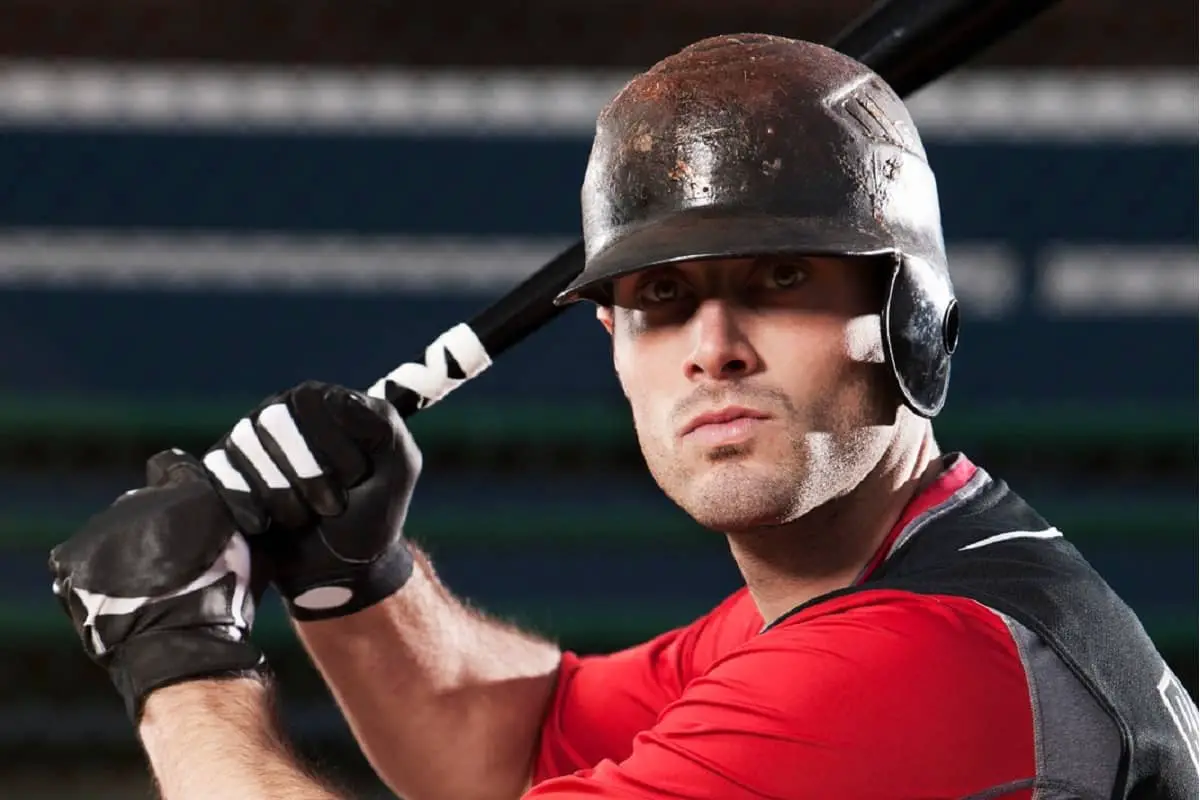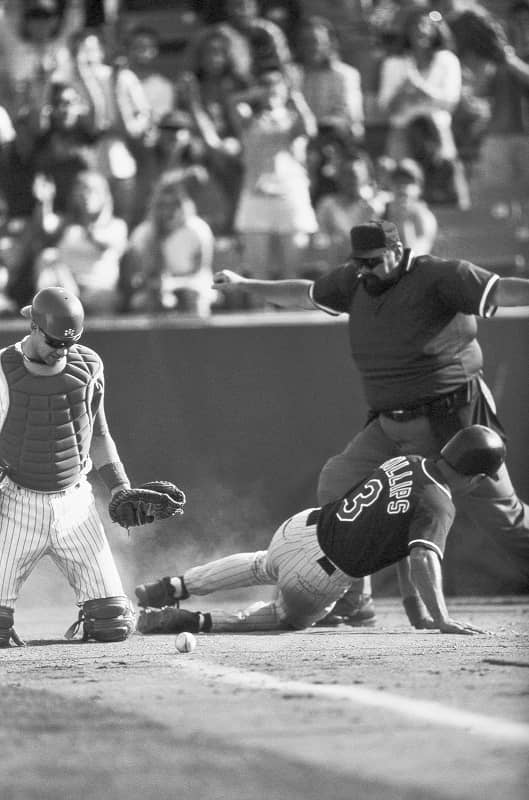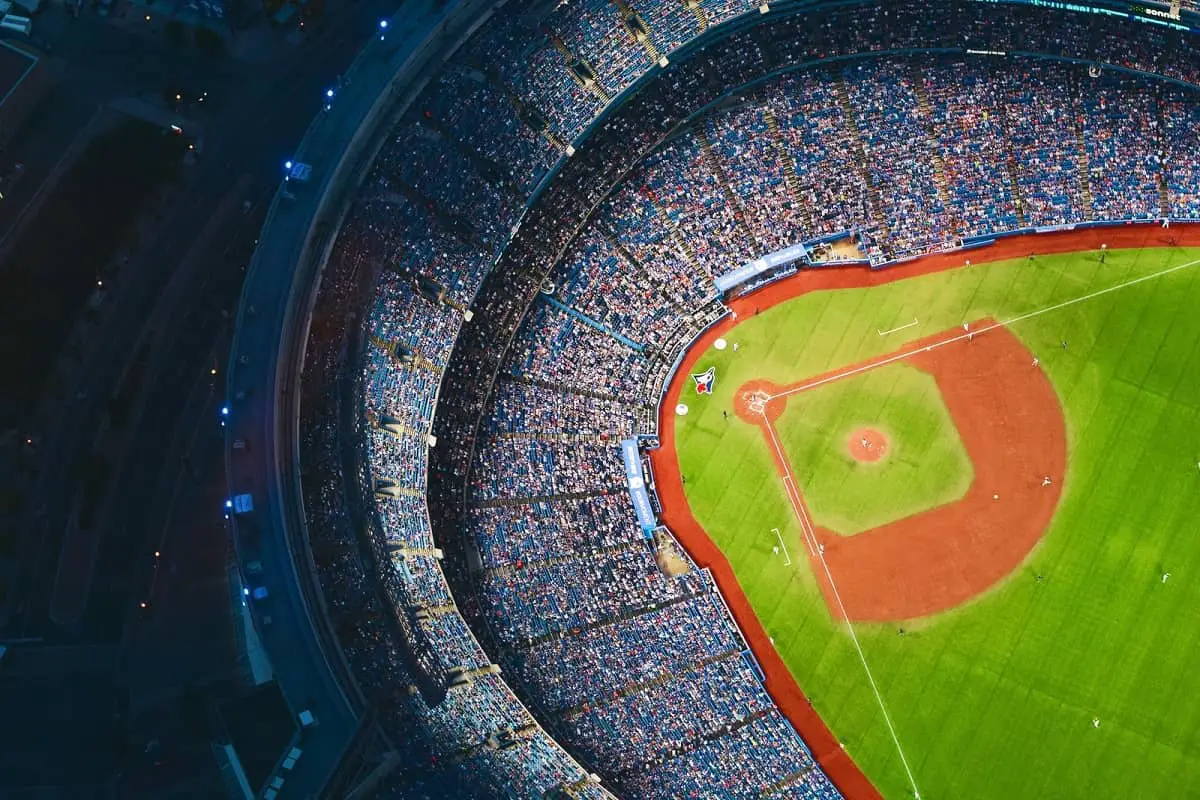Pine Tar on Baseball Helmets
As the sports news camera zooms in on your favorite baseball player, you notice that his helmet looks worse for wear. It’s absolutely coated in a thick varnish of muddy-looking pine tar.
You’ve seen it before but never stopped to wonder – why do baseball players put pine tar on baseball helmets?
Yet, despite its widespread use, pine tar has been the focus of some controversy over the years.
KEY TAKEAWAYS
* Professional baseball players coat their equipment in pine tar to help maximize their grip.
* The sticky tar mixture is made from distilled pine wood.
* MLB rules prohibit pine tar above the bottom 18 inches of the bat.
* Unofficially, the pine tar on the helmet is like an excess tar repository for when the player needs a top up.

Disclosure: As an Avantlink and Amazon Associate, we earn from qualifying purchases. Disclosure Statement.
Page Content
Why Use Pine Tar?
Although it has been used in MLB for decades, pine tar on baseball bats is a regulated compound that can give players an unfair advantage. To help you understand why players add it to their helmets and other equipment, we’ve compiled everything you need to know about pine tar. Let’s take a look.
Pine tar was originally used by sailors to seal the hulls of their ships and prevent the wood from rotting while at sea.
Baseball players, on the other hand, could care less about maintaining the condition of their wooden bats and more about benefiting from the sticky grip-enhancing power of pine tar.
A stronger grip means players can put more power into their swings without losing control of their bats.
Other benefits of pine tar include:
- Pitchers have a better grip on the ball.
- Catchers have a better grip on their mitts.
- Players look more rugged and manly.
Rules do state, however, that pine tar has to stay off the ball. For the sake of economics, muddying up every baseball for every play breaks the budget. Not to mention it ruins the clean white sheen of a baseball.

Why Put Pine Tar on Baseball Helmets?
If pine tar is supposed to help with grip, then why add it to a helmet? The official line is that it gets there accidentally when players touch their helmets. In truth, this is where things get complicated. To keep players from having too much advantage in the game, the MLB regulates how much pine tar a player can apply to their bat.
According to Rule 3.02(c) of the 2019 Official Baseball Rules, players are prohibited from applying pine tar above the bottom 18 inches of their bats. They reason that increasing the amount of friction between the striking end of a bat and a baseball would unfairly make it easier to hit a home run.
RECOMMENDED: Best Batting Helmets with Jaw Guard
This content was originally published on headsdontbounce.com. If it appears on another website, it is a violation of the copyright owned by headsdontbounce.com.
But that doesn’t mean pine tar is completely illegal. Players can work around the rules by applying pine tar to their helmets. When a batter comes up to the plate, they can simply rub their hands on their helmets to get some of the tar. This way they still get the benefits of pine tar without the risk of breaking the rules.
What Would Happen if a Batter Broke the Rule?
There was a major incident in 1983 involving a batter breaking the 18-inch rule during an American League game between the Kansas City Royals and the New York Yankees. The Royals were down a point at the top of the ninth inning just as Royal’s player George Brett came in to save the day.
Hitting a double-run home run, Brett secured his team’s position ahead of the Yankees. The apparent victory was short-lived, though, as the Yankee’s manager noticed that Brett’s bat was caked in pine tar. After complaining to the umpire that Brett had cheated, the umpire agreed and had the play discounted. This setback gave the Yankees enough wiggle room to go on and win the game.
George Brett and the pine tar incident – Video
What was the Outcome of the 1983 Incident?
After losing the game, the Royals were understandably angry about the umpire’s decision to throw out their play. They brought their complaints to the head of the American League who upheld their play and 25 days later, they got a second chance to finish the game. After resuming where Brett made his infamous hit, the Royals went on to beat the Yankees.
Since this ruling, it has been the rule de jure that players cannot be thrown out for pine tar interference unless the complaint comes before the player goes up to bat. Once the player hits the ball, they can no longer be penalized and any points scored will count. Therefore, it’s up to managers and other players to stay vigilant for over-tarred batting equipment.
Conclusion
So, now you know why baseball players put pine tar on their helmets. The next time you see your favorite baseball player wearing a muddy, tar-coated helmet, know that that tar comes with a long history of scandal and controversy.
While some tar undoubtedly gets onto players’ helmets after they bat, it’s well known that other players intentionally add the sticky substance to help strengthen their grip while batting. Is it legal? Yes, as long as it stays within the rules!

I hope we have covered the subject of ‘pine tar on baseball helmets’ to your satisfaction. If you enjoyed this article, take a look at the related reads below for some more interesting reads!
If you liked this post, why not share it with your friends.